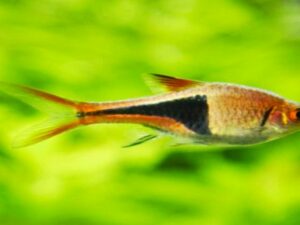Anacharis is a common aquatic plant often used in home aquariums and ponds. This plant is also known as Brazilian waterweed, egeria densa, or elodea canadensis.
Anacharis is a fast-growing plant that can reach up to 6 to 8 inches in length. This plant is native to North and South America.
Anacharis can be found in various colors, including green, red, and brown. This plant is often used as an oxygenator and can help to improve water quality in your aquarium or pond.
Anacharis is a good plant for beginner aquarists because it is relatively easy to care for. In this article, we will get complete details about the care of anacharis.
Table of Contents
- Species Summary
- Anacharis Care Guide
- Anacharis Care
- Tank Size
- Tank Mates
- How To Plant Anacharis
- Step By Step Planting process
- Trimming And Pruning
- Lighting Requirements
- Fertilizer Requirements
- Harvesting
- Substrate
- Water Temperature
- Water pH And Water Hardness
- Heater
- Filter
- Advantages Of Having Anacharis In Your Tank
- Disadvantages Of Having Anacharis In Your Tank
- Conclusion
Species Summary
| Scientific Name: | Egeria densa |
| Family: | Hydrocharitaceae |
| Common Name: | Anacharis, Brazilian waterweed, Elodea |
| Care Level: | Easy |
| Size: | 6 to 8 inches |
| Life Span: | 1 to 2 years |
| Water Temperature: | 72° to 78°F |
| pH Levels: | 6.5 to 7.5 |
| Water hardness: | 3 to 8 kDH |
| Care Level: | Easy |
Anacharis Size And Growth Rate
It can grow up to 1 meter in length. However, most aquarium and pond plants are only a few inches tall. Anacharis is a fast-growing plant. This plant can grow up to 2 centimeters per week in optimal conditions.
Also, Check: Cardinal Sulawesi Shrimp 101
Anacharis Appearance
Anacharis plants are typically green but can also be found in red and brown. This plant has long, slender leaves that grow in pairs on opposite stem sides. This is often used as an oxygenator or as a decorative plant in aquariums and ponds.
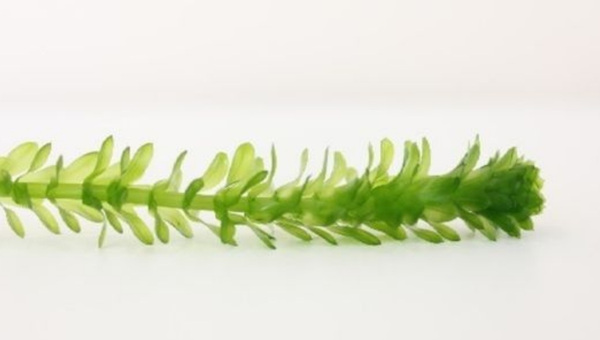
Anacharis Care Guide
Anacharis is a good plant for beginner aquarists because it is relatively easy to care for. This plant is tolerant of many water conditions and can even tolerate brackish water. It does not require special care or attention.
Anacharis Care
This is a versatile plant used in fresh and saltwater aquariums and ponds. This plant is easy to care for and maintain.
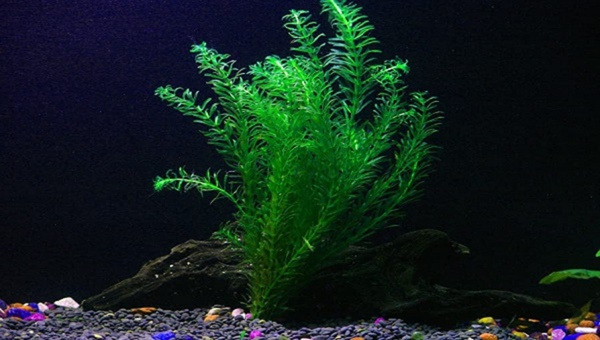
Plant your anacharis in a well-lit location; it needs a lot of light to grow. If you are keeping your plant in an aquarium, place it near the top of the tank, where it will receive plenty of light.
This is a fast-growing plant. For this reason, you may need to trim your plant regularly to prevent it from taking over the aquarium or pond.
Tank Size
Anacharis is a small plant that only grows to a height of one meter. However, this plant can quickly become overgrown. For this reason, it is essential to choose a large enough tank to accommodate the plant’s growth.
Most experts recommend using a tank with at least 10 or 15 gallons of volume.
Also, check: Cherry Shrimp Care Guide
Tank Mates
Anacharis is a peaceful plant that can be kept with a wide variety of tank mates. This plant is compatible with both fresh and saltwater fish, as well as invertebrates.
Some of the best tank mates for include:
- Guppies
- Mollies
- Platies
- Swordtails
- Tetras
- Corydoras
- Shrimps
- Snails
This is a trendy plant that is easy to care for and maintain. This plant is an excellent addition to fresh and saltwater aquariums and ponds.
How To Plant Anacharis
Anacharis can be planted on the substrate or floating on the water’s surface. If you are growing this plant in the substrate, bury the roots. It will quickly spread and fill in your aquarium or pond.
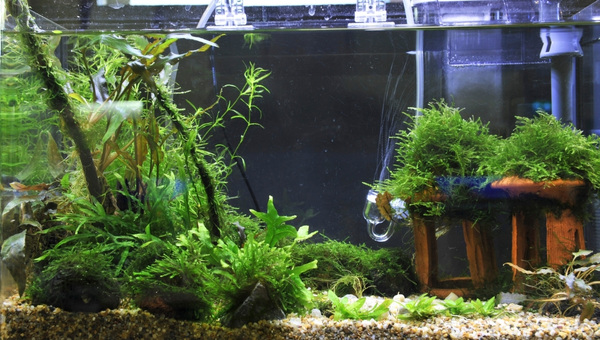
Anacharis can be propagated by cuttings or division. To propagate by cuttings, take a cutting of the plant and plant it in the substrate. To propagate by division, divide the plant into two or more pieces and produce each element in the substrate.
Step By Step Planting process
- Fill your aquarium or pond with water. Anacharis can be placed in either fresh or saltwater.
- If you are using a pot, fill it with gravel or sand.
- Place in the aquarium or pond.
- It does not need to be planted in soil.
- You can place the plant in a location that receives full or partial sun.
- It does not need to be pruned, but you can trim the plant if it gets too large.
- It can reproduce by sending out runners or by producing flowers.
You may also check: Bamboo Shrimp Care Guide
Trimming And Pruning
Anacharis does not need to be pruned, but you can trim the plant if it gets too large. Cut off the excess growth with a sharp knife to trim the plant. Be sure to dispose of the trimmings in the trash so they do not end up in your aquarium or pond.
Lighting Requirements
Anacharis does not require special lighting requirements. This plant can grow in low and high-light conditions. However, It will grow best in moderate to high light conditions.
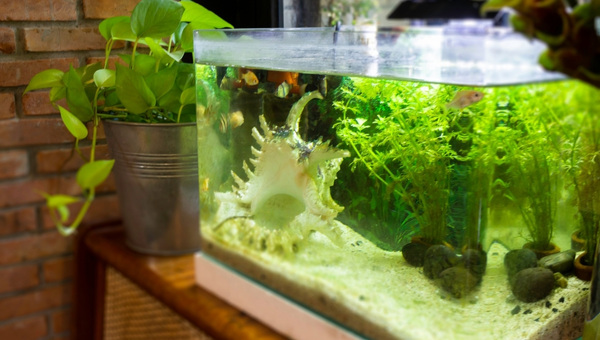
If you keep it in a low-light aquarium, you may need to supplement the lighting with artificial plant lights.
Fertilizer Requirements
Anacharis does not require special fertilizer requirements. This plant can grow in both low and high-nutrient conditions. However, it will grow best in moderate to high nutrient conditions.
If you keep it in a low-nutrient aquarium, you may need to supplement the nutrients with artificial plant fertilizers.
Also, check: Ghost Shrimp 101
Harvesting
If you are growing it for food, you can harvest the plant when it reaches a length of 30 centimeters. Cut it at the base with a sharp knife to harvest the plant.
If you are growing it for decoration, you can harvest the plant when it reaches the desired size. It can quickly become overgrown, so regularly trim the plant.
Substrate
Anacharis does not require a particular substrate. This plant can grow in gravel and sand substrates. However, it will grow best in a rich organic matter substrate.
If you keep it in an aquarium, you may need to supplement the substrate with artificial plant fertilizer tablets.
Also Check: Keyhole Cichlid Ultimate Care Guide
Water Temperature
Anacharis is a tolerant plant that can adapt to a wide range of water conditions. However, this plant prefers neutral to slightly alkaline water. The ideal temperature for this plant is 72° to 78°F. It can also tolerate brackish water.
To ensure optimal growth, it is essential to maintain good water quality in your aquarium or pond. It will help to improve water quality by providing oxygen and absorbing nutrients from the water.
Water pH And Water Hardness
The ideal pH is 6.5 to 7.5. It can also tolerate a wide range of pH levels. However, this plant will grow best in neutral to slightly alkaline water.
The ideal water hardness is 3 to 8 kDH. It can also tolerate a wide range of water hardness levels. However, this plant will grow best in moderately hard-to-hard water.
Also, check: Purple Firefish Care Guide
Heater
Anacharis does not require a heater. However, this plant prefers water that is around 72° to 78°F. If you keep it in a cold water aquarium, you may need a heater to maintain the ideal water temperature.
Also, check Cardinal Sulawesi Shrimp 101: Care Guide & Breeding Guide
The suggested heaters are:
- Aqueon Pro Heater
- Cobalt Aquatics Neo-Therm Heater
- Eheim Jager Aquarium Heater
- Fluval E Series Heater
- Hydor ETH Inline External Aquarium Heater
- Marina C200 Submersible Glass Aquarium Heater
Check: Butterfly Betta Care Guide
Filter
Anacharis does not require a filter. However, this plant will help to improve water quality by providing oxygen and absorbing nutrients from the water. If you keep it in an aquarium, you may need a filter to maintain good water quality.
The suggested filters are:
- Aqua Clear Power Filter
- Fluval Canister Filter
- Marineland Penguin Bio-Wheel Power Filter
- Penn Plax Cascade Canister Aquarium Filter
- Tetra Whisper EX Power Filter
- Zoo Med 501 Canister Filter
Also, check: How To Cure Fish Fungus
Advantages Of Having Anacharis In Your Tank
Anacharis is a trendy plant that is easy to care for and maintain. This plant is an excellent addition to fresh and saltwater aquariums and ponds. It provides many benefits to your tank, including.
- Improving water quality: It helps to improve water quality by providing oxygen and absorbing nutrients from the water.
- Creating a natural habitat: It creates a natural habitat for your fish and other aquatic creatures.
- Enhancing the beauty of your tank: This is a beautiful plant that will add color and life to your aquarium or pond.
- Providing shelter for your fish: Provides shelter and hiding places.
- Attracting beneficial insects: It attracts insects, such as shrimp, to your tank.
- Controlling algae growth: It helps to prevent algae growth in your aquarium or pond.
- Reducing stress: It has been shown to reduce stress in fish.
- Improving breeding success: It has been shown to improve breeding success in fish.
- Regulating pH levels: It helps to control pH levels in your aquarium or pond.
- Absorbing toxins: It helps to absorb toxins from the water, making it an excellent plant for filtering your tank.
- Providing food: It provides food for your fish and other aquatic creatures.
- Stimulating growth: It has been shown to stimulate fish growth.
- Reducing aggression: It has been shown to reduce aggression in fish.
- Helping to control parasites: It helps to control parasites in your aquarium or pond.
- Improving immune system function: It has been shown to improve immune system function in fish.
Also, check: Tomini Tang Fish Care Guide
Disadvantages Of Having Anacharis In Your Tank
While anacharis provides many benefits to your aquarium or pond, there are a few disadvantages to consider.
- Can be invasive: This is a fast-growing plant that can quickly take over an aquarium or pond if left unchecked.
- Can be toxic to fish: This can be harmful if eaten in large quantities.
- Can cause oxygen depletion: If it dies, it can cause oxygen depletion in your aquarium or pond.
- Can clog filters: If it is not kept trimmed, it can clog filters.
- Can obscure views: It can obscure pictures in your aquarium or pond if it is not kept trimmed.
- Can be difficult to remove: It can be challenging to remove from your aquarium or pond once it has taken root.
- Can be a breeding ground for bacteria: It can be a breeding ground for bacteria if it is not kept trimmed.
- Can be a host for parasites: It can be a host for parasites if it is not kept trimmed.
- Can block sunlight: It can block sunlight from reaching the bottom of your aquarium or pond if it is not kept trimmed.
You may also check: Sand Sifting Starfish 101
Conclusion
Anacharis is a popular plant that is easy to care for and maintain. This plant provides many benefits to your aquarium or pond, including improving water quality, creating a natural habitat, enhancing the beauty of your tank, providing shelter for your fish, and attracting beneficial insects.
Anacharis can be invasive and may need to be trimmed regularly to prevent them from taking over the aquarium or pond. It can also be toxic to fish if eaten in large quantities.
If you are considering adding anacharis to your aquarium or pond, research this plant carefully to ensure it is the right fit for your tank.



